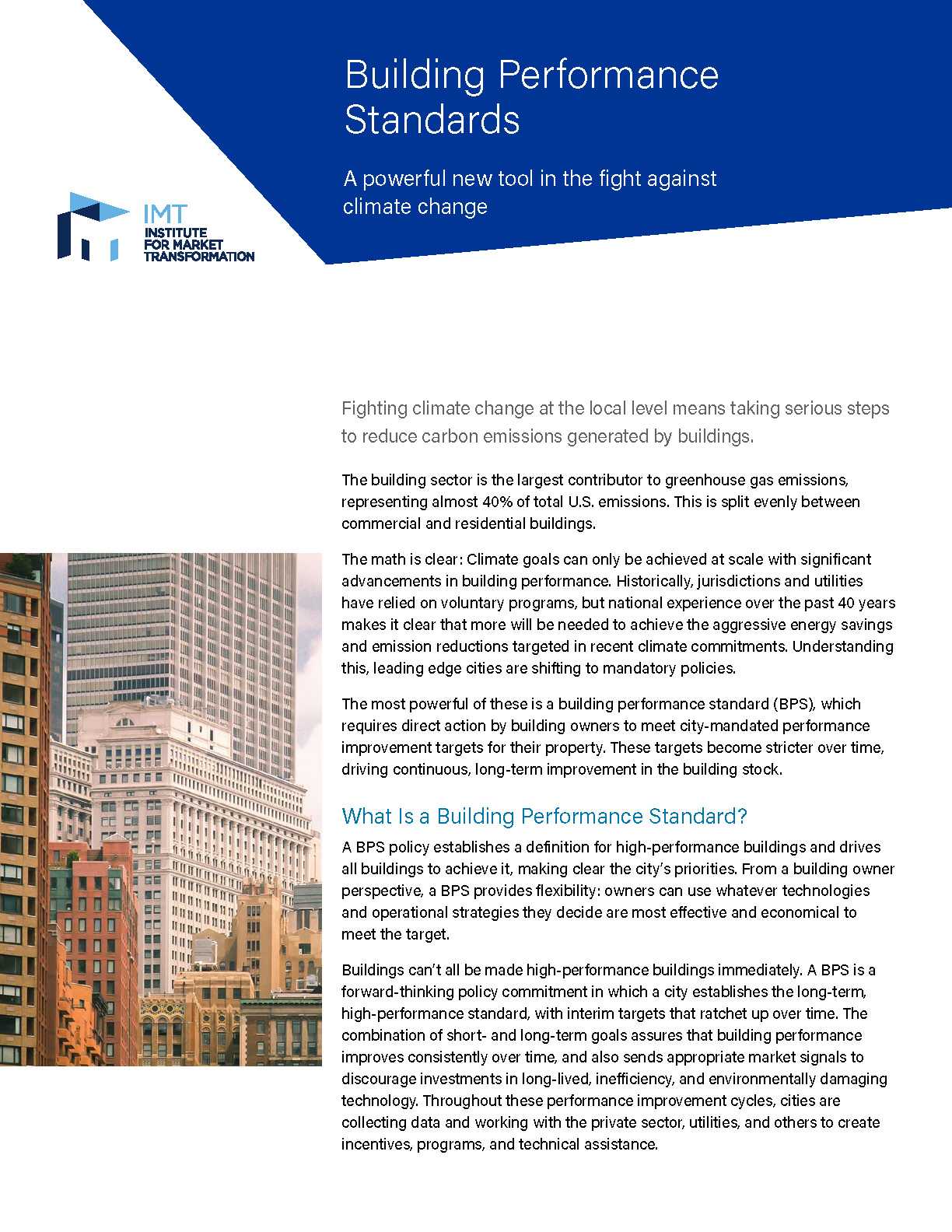Just before COVID-19 swept the world and introduced the concept of social distancing, we had a first-hand glimpse of how local governments are beginning to translate climate commitments to climate action. At an invite-only event in Washington, DC, representatives of 14 localities came together in early March to discuss a transformational approach to addressing the carbon crisis in our cities.
When we think about buildings, many people see beautiful city skylines and historic facades, but these local leaders came together because they know buildings also account for nearly 40% of U.S. emissions—more than any other individual sector. In December, I wrote that U.S. cities are increasingly leading on reducing building emissions by setting carbon limits, expanding building energy policies, and involving new stakeholders in sustainability policies. Increasingly this looks like a Building Performance Standard (BPS). In the past, cities have required building performance improvements with specific, isolated policies on separate timelines. The beauty of BPS is that it mandates a greater, more powerful, set of carbon reductions across a broader set of buildings while allowing much greater flexibility and predictability for owners and industry players. A city can make clear its goals of a carbon-free future, while allowing the private sector to enact solutions on a practical timeline to accomplish those goals, coupling the city’s ambition with the power of market forces.

Workshop participants envision their carbon-free future 
Lotte Schlegel, Executive Director at IMT 
Brainstorming collaborative approaches 
Tommy Wells and Lotte Schlegel 
Discussing carbon metrics 
Identifying policy solutions
BPS is a game-changing opportunity for cities to transform buildings from a major source of climate change to platforms for smart, sustainable, and equitable communities. The BPS summit, hosted by IMT and the Urban Sustainability Directors Network with the support of our partners in the American Cities Climate Challenge including the Building Electrification Initiative, Kapwa Consulting, Natural Resources Defense Council, and the New Buildings Institute, was an opportunity to dig deeper. The partners and local representatives came together to develop next-generation policy and program solutions to today’s climate crisis. The main lessons were:
- Building Performance Standards (BPS) prioritize immediate action on affordability and climate while preparing for long term change. BPS uses energy efficiency and renewable energy to provide immediate carbon reductions, while leveraging a long-term performance standard to move the city toward zero-carbon goals through interim targets that require electrification.
- To design effective policies, collaboration is essential among cities, states, utilities and the real estate sector. Local governments need to develop a clear regulatory framework with pathways for private-sector compliance alongside financial and technical support provided by cities, states and utilities.
- Effectively implementing a BPS requires more than just passing a law. Cities will need to invest in programs to engage and assist building owners, service providers and the community as a whole to ensure successful policy implementation. Ideally, BPS is one of many tools to create good local jobs that reduce climate risk while preparing technicians, architects and the local community for the energy economy of the future. For this to happen, a broad coalition of interests must align on policy, implementation and enforcement.
- BPS must address affordability by working closely with the affordable housing sector. Perhaps the most important lesson learned was the need to broaden the coalition of partners as we continue to build these policies. As BPS becomes more mainstream, it is critical to involve multifamily stakeholders.
BPS is still new, but the opportunity is as big as communities are willing to think. The standards are a convergence point for city government, utilities, industry players, and local stakeholders to envision and enact carbon reductions through concrete and immediate improvements (via energy efficiency) while building toward 100% electrification, clean energy jobs, and a modern energy grid. IMT is excited to continue working with cities and partners in developing policies that harness a city’s ambition, provides clear signals to the commercial real estate market, and prioritizes health, resilience, and equity.
We recognize that long-term investments can be daunting on any day, let alone in the midst of an international pandemic, but acting now is always cheaper, and more effective, than waiting for climate change to get worse and disaster costs to rise. With a decade left to meet major climate goals that avoid climate catastrophe, it is important to rethink the way we look at buildings. Through BPS and cross-sector partnerships, we can make the places we live and work reflect society and economy we want to see. Learn more about the role that BPS can play in clean energy at www.IMT.org/bps.


